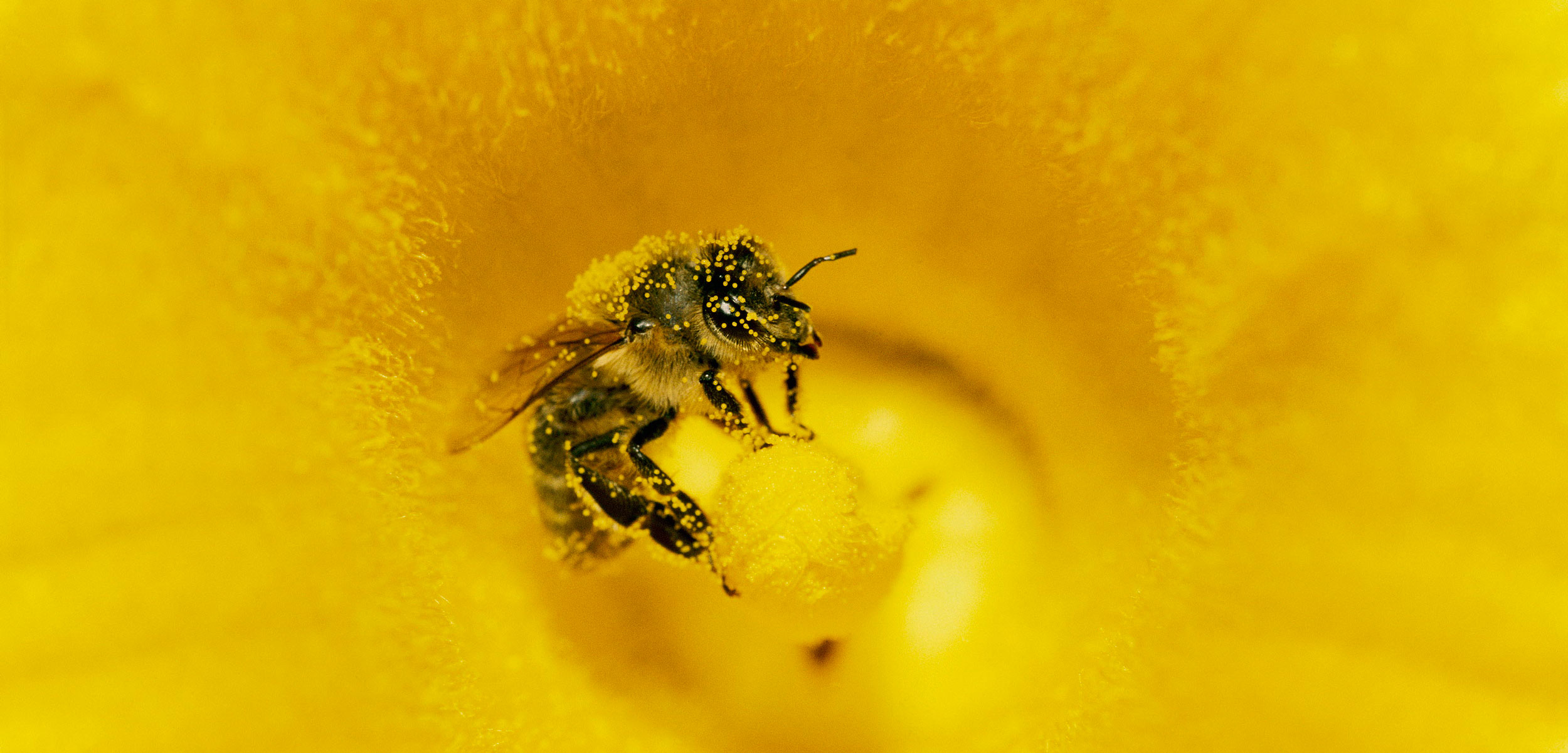What’s Bad for Bees Could Be Bad for Marine Life, Too
Preliminary research shows that a popular insecticide hampers arthropods in the ocean.
Article body copy
Over the past two decades, farmers hoping to ward off pests have increasingly turned to planting seeds that come straight from the supplier pre-coated in neonicotinoids, a controversial class of insecticide chemically related to nicotine. With the insecticide built into the seeds, farmers no longer have to spray their fields with toxic chemicals, theoretically reducing the risk to non-target species.
But as it turns out, neonics, as they’re also known, do impact other species—most famously honeybees, the steep decline of which has been linked to the insecticides. That discovery led the European Union to ban neonics in 2018. However, they remain widely used in the United States, as well as in Canada, though with some restrictions. Now, Haley Davis, an undergraduate student studying toxicology in marine ecosystems at Hollings Marine Laboratory in South Carolina, and her colleagues are raising yet another reason to be concerned about the insecticides. Neonics dissolve easily in water, they say, and could be harming marine life.
Davis and her fellow researchers presented the results of their examination into the effects of imidacloprid, a common neonicotinoid, on coral and reef-dwelling species that are vulnerable to runoff from coastal agriculture at a scientific meeting in February.
They found that coral exposed to the insecticide had reduced polyp activity—an indication of increased stress. Shrimplike amphipods were affected, too. Even at low doses, imidacloprid exposure inhibited their movement. And for some, high levels of exposure were fatal.
Masumi Yamamuro, a biogeochemist with the Geological Survey of Japan who was not involved in the research, says that, just like honeybees, many marine animals are arthropods, and thus could be similarly vulnerable to neonics. “The disruption of marine ecosystems and the food web could be severe,” she says.
But when it comes to this class of insecticide, the relationship between exposure and impact is not well understood, says Michelle Hladik, an environmental chemist with the US Geological Survey who did not take part in the study. Hladik says most of the concentrations of neonics tested in Davis’s experiment were unrealistically high—beyond what is seen in the wild. But even low doses, she adds, could still be a hazard for marine life.
Though more research is needed to find the concentration thresholds at which neonics become harmful—something that Davis and her colleagues are trying to figure out—Hladik says their study is a step toward rectifying that gap in the knowledge.

